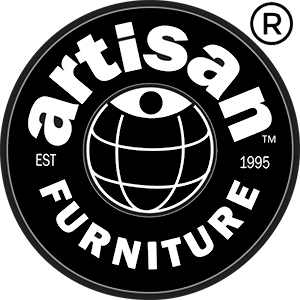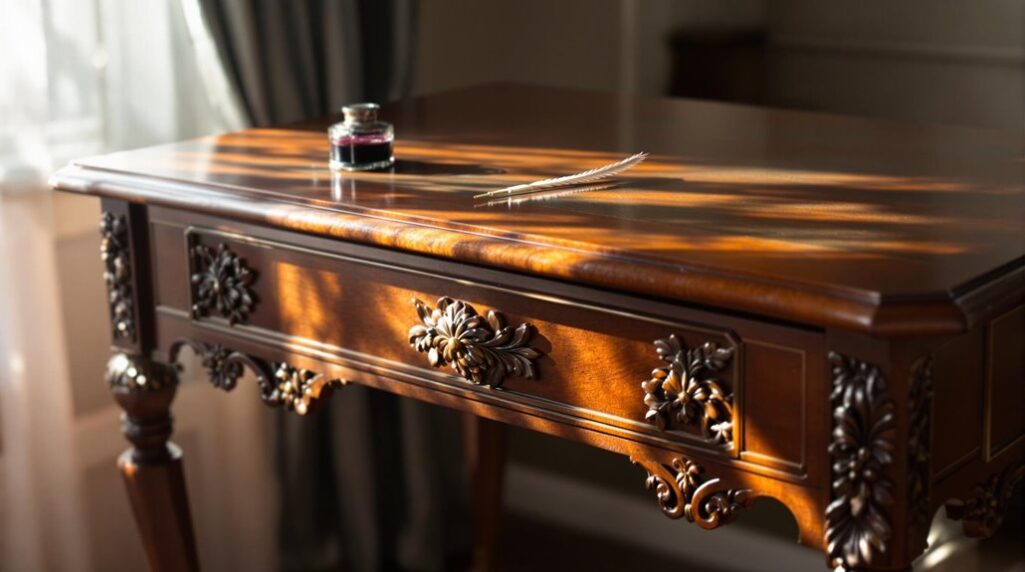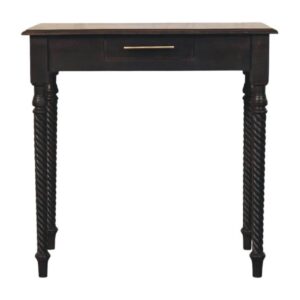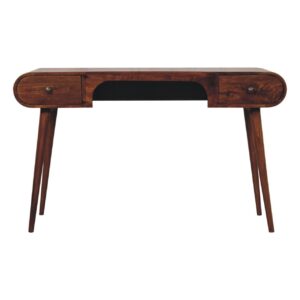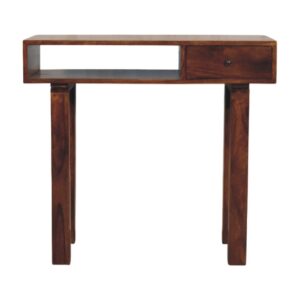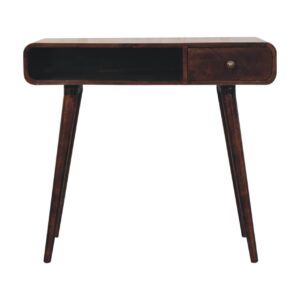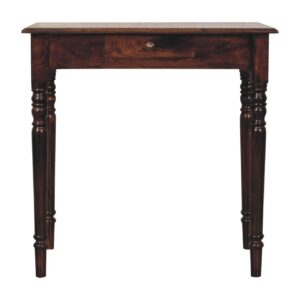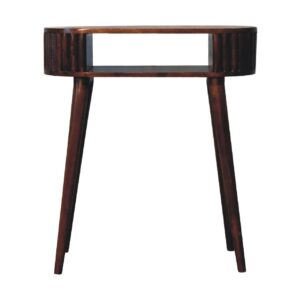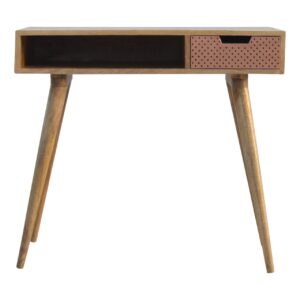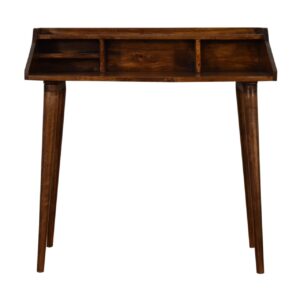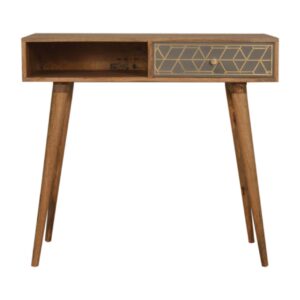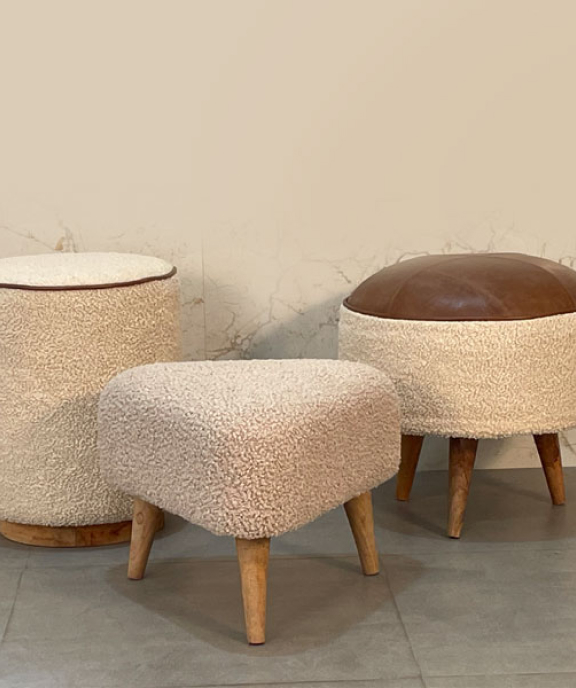The old name for a writing desk is "secretary." This term originates from the Latin word "secretarius," meaning someone entrusted with secrets. In historical contexts, as literacy rates rose, writing desks evolved into specialized furniture, prominently used in administrative roles. The secretary desks often featured slanted tops for comfortable writing, along with compartments for organization. These pieces were designed to reflect both status and functionality, showcasing craftsmanship in various styles. Understanding the evolution of the term illuminates its cultural significance, especially regarding intellectual pursuits and personal workspace development throughout history. There's more to uncover about this fascinating evolution.
Historical Context of Writing Desks
As writing became an essential part of daily life, the need for a dedicated space to compose thoughts emerged. Initially, people utilized simple tables or surfaces for writing. However, as literacy rates increased during the Renaissance, specialized furniture developed to accommodate the growing demand. The writing desk evolved from rudimentary designs into more functional pieces, featuring compartments for storing writing instruments and papers. These desks not only facilitated the act of writing but also served as status symbols, reflecting the owner's wealth and education. By the 18th century, distinct styles, such as the escritoire, gained popularity, providing an organized workspace. Understanding this context highlights the evolution of writing desks and their significance in fostering communication and creativity throughout history.
The Origin of the Term "Secretary"
While many might think of "secretary" as a modern job title, the term actually has roots that trace back to the Latin word "secretarius," meaning "one entrusted with secrets." Initially, secretaries were individuals designated to handle confidential matters for their employers, often working from specialized desks designed for both privacy and efficiency. This role required a unique skill set, including organization, communication, and discretion. As the responsibilities of secretaries expanded over time, they evolved into crucial administrative positions within various organizations. The traditional image of a secretary, often depicted with a writing desk, reflects their importance in managing information and facilitating communication. Therefore, the term "secretary" not only highlights a job title but also signifies an essential function within the workplace.
Evolution of Writing Desks
Writing desks have evolved considerably over the centuries, reflecting changes in functionality and style. You'll notice how historical origins shaped various types of writing surfaces, from simple tables to ornate models designed for specific purposes. Furthermore, cultural variations in design reveal much about societal values and technological advancements, illustrating the desk's role in both personal and professional settings.
Historical Origins of Desks
Desks have evolved considerably over the centuries, transforming from simple surfaces for writing to multifunctional pieces of furniture that cater to various tasks. In ancient civilizations, such as Egypt and Greece, writing surfaces were often portable and used primarily for record-keeping. The Middle Ages saw the rise of more structured desks, often designed for scholars and clergy, featuring compartments for ink and parchment. By the Renaissance, craftsmen began to incorporate ornate designs, reflecting the status of their owners. The Industrial Revolution further revolutionized desks with mass production, making them accessible to the middle class. Today, desks serve diverse functions, from home offices to collaborative workspaces, illustrating their ongoing adaptation to societal needs and technological advancements.
Types of Writing Surfaces
As the need for efficient writing surfaces grew, various materials and designs emerged to suit different tasks and preferences. Initially, wooden surfaces dominated, offering durability and stability. Over time, you'll find that metal desks became popular, especially in industrial settings, due to their strength and ease of cleaning. Glass surfaces also gained traction, providing a modern aesthetic, while allowing for easy maintenance. Additionally, the rise of technology led to the incorporation of laminate materials, which offer versatility and affordability. Each type of writing surface serves distinct purposes; for instance, thicker wooden desks often support extensive writing, while sleek glass tables are ideal for minimalist environments. Understanding these variations helps you choose the right desk for your specific writing needs.
Cultural Variations in Design
While the evolution of writing desks has been influenced by practicality, cultural variations have played a significant role in shaping their designs across different societies. For instance, in Asia, you'll find intricately carved wooden desks that reflect the region's rich artistic traditions, often incorporating elements of Feng Shui for harmony. In contrast, European styles tend to emphasize functionality, with designs like the roll-top desk that cater to the needs of scholars and writers. Meanwhile, modern minimalist designs, popularized in the 20th century, focus on sleek lines and simplicity, reflecting contemporary values of space and efficiency. Each cultural variation not only serves a purpose but also embodies the societal values, aesthetics, and functionality that define that particular time and place.
Design Features of Secretaries
When you look at secretaries, you'll notice a blend of historical design elements and practical features that set them apart. These pieces often showcase intricate craftsmanship, such as ornate carvings and inlays, reflecting the craftsmanship of their time, while also incorporating functional aspects like hidden compartments and adjustable writing surfaces. Understanding these design features not only enhances your appreciation of secretaries but also reveals how they've evolved to meet the needs of their users throughout history.
Historical Design Elements
Secretaries, often regarded as elegant symbols of productivity, showcase a range of historical design elements that reflect their evolution over time. The intricate carvings and rich wood finishes reveal craftsmanship that was highly valued in earlier centuries. Many secretaries feature slanted tops, allowing for comfortable writing angles, while interior compartments were designed to organize papers and writing instruments efficiently. The incorporation of glass doors in later designs not only protected documents but also displayed them attractively. Additionally, the use of brass hardware provided both functionality and aesthetic appeal. These elements illustrate how secretaries were not merely utilitarian pieces of furniture; they were also status symbols, embodying sophistication and style in the workplaces of their time.
Functional Features Explained
As you explore the functional features of secretaries, you'll notice their clever blend of form and utility. These versatile pieces often include multiple compartments, allowing for organized storage of documents, stationery, and personal items. The fold-down writing surface, designed to create a compact workspace, can be easily closed to maintain a tidy appearance. Additionally, many secretaries feature adjustable shelves and drawers, accommodating various items and providing flexibility based on your needs. Some designs even incorporate hidden compartments, offering discreet storage solutions. The overall aesthetic appeals to both traditional and modern tastes, making secretaries suitable for diverse environments. Ultimately, these functional elements enhance productivity while adding character to your workspace, merging practicality with artistry seamlessly.
Cultural Significance of Writing Desks
Although writing desks may seem like mere furniture, they hold deep cultural significance across various societies. Historically, they served as the epicenter for intellectual pursuits, symbolizing education and creativity. In many cultures, writing desks represented a space for authors, scholars, and diplomats, where ideas transformed into tangible works. The design and craftsmanship of these desks often reflected societal values, illustrating status and artistry. For instance, ornate styles in aristocratic households indicated wealth and refinement, while simpler desks in working-class homes emphasized functionality and practicality. Additionally, writing desks fostered a sense of personal space, encouraging reflection and concentration. Consequently, their importance extends beyond utility, embodying cultural identity and facilitating communication, knowledge-sharing, and artistic expression.
The Transition to Modern Desks
While the evolution of writing desks has deep roots in history, modern desks have transformed to meet the demands of contemporary lifestyles. Today, desks are designed not just for writing but also to accommodate technology, with features like built-in cable management and adjustable heights. As remote work becomes more prevalent, ergonomic designs have gained popularity, ensuring user comfort during long hours of use. You'll also notice an emphasis on multifunctionality; many desks now include storage solutions or integrated shelving to maximize space in smaller homes. Materials have shifted as well, with a blend of traditional woods and sustainable composites reflecting current environmental awareness. This change highlights how desks have evolved from simple writing surfaces to essential components of modern workspaces.
Notable Styles of Secretaries
With the shift towards multifunctional furniture, secretaries have emerged as a notable style of writing desk that blends functionality with aesthetic appeal. These desks usually feature a slanted writing surface that can be closed, protecting your work while maintaining a tidy appearance. The classic styles include the Federal, which showcases elegant lines and inlays, and the Victorian, known for its elaborate carvings and rich finishes. Additionally, you might find the modern secretary, which incorporates sleek designs and versatile storage options. Each style not only adds character to a room but also serves practical purposes, making them an excellent choice for both home and office environments. Their combination of beauty and utility makes secretaries a lasting favorite in furniture design.
The Legacy of Writing Desks
As you explore the legacy of writing desks, you'll find they represent a fascinating evolution of design and function throughout history. Initially crafted for nobility, these desks became symbols of status and intellect. Over time, they adapted to accommodate changing societal needs, incorporating features like drawers and writing surfaces to enhance functionality. The Industrial Revolution further transformed their production, making them accessible to the middle class. Today, writing desks serve not only as furniture but also as tools that facilitate creativity, organization, and productivity. While digital technology has reshaped how we write, the writing desk remains relevant, embodying a blend of tradition and modernity. Its enduring presence in homes and offices highlights its significance in personal and professional spaces.

